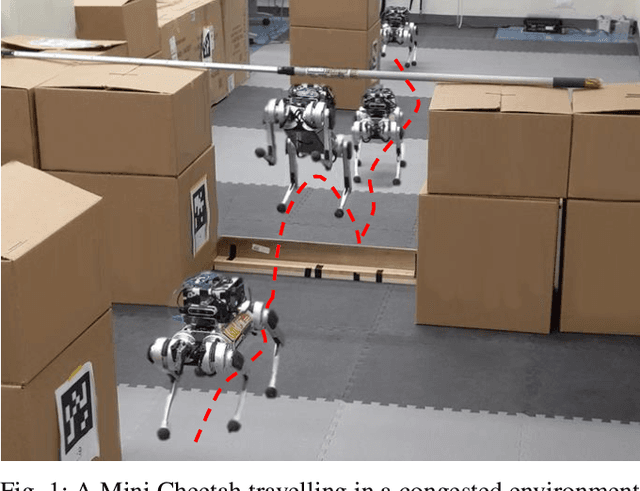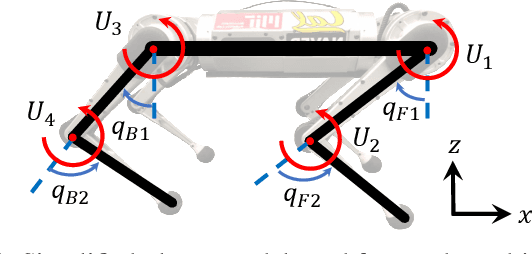Ed Izaguirre
Autonomous Navigation for Quadrupedal Robots with Optimized Jumping through Constrained Obstacles
Jul 01, 2021



Abstract:Quadrupeds are strong candidates for navigating challenging environments because of their agile and dynamic designs. This paper presents a methodology that extends the range of exploration for quadrupedal robots by creating an end-to-end navigation framework that exploits walking and jumping modes. To obtain a dynamic jumping maneuver while avoiding obstacles, dynamically-feasible trajectories are optimized offline through collocation-based optimization where safety constraints are imposed. Such optimization schematic allows the robot to jump through window-shaped obstacles by considering both obstacles in the air and on the ground. The resulted jumping mode is utilized in an autonomous navigation pipeline that leverages a search-based global planner and a local planner to enable the robot to reach the goal location by walking. A state machine together with a decision making strategy allows the system to switch behaviors between walking around obstacles or jumping through them. The proposed framework is experimentally deployed and validated on a quadrupedal robot, a Mini Cheetah, to enable the robot to autonomously navigate through an environment while avoiding obstacles and jumping over a maximum height of 13 cm to pass through a window-shaped opening in order to reach its goal.
 Add to Chrome
Add to Chrome Add to Firefox
Add to Firefox Add to Edge
Add to Edge